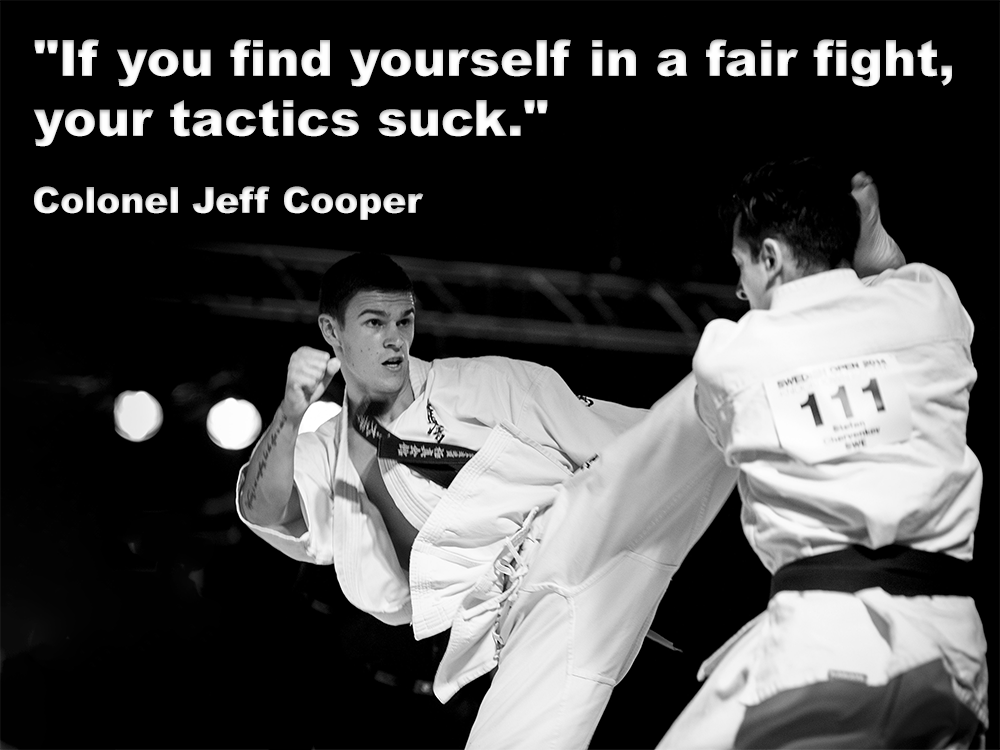
Sport karate, offers numerous benefits, physical fitness, aesthetics, discipline, and sportsmanship. However, it is important to recognize that sport karate is not the ideal choice for individuals seeking practical self-defense skills.
.
Now before the comments start, in the 1970’s and ’80’s, sport karate was my main interest, I’m just trying to help some practitioners understand the differences, which seems to be a stubborn issue.
.
Karate competitions operate under rules and regulations that prioritize controlled techniques and scoring points rather than inflicting real harm on opponents. There are limitations on target areas, specific techniques, and restricted grappling.
.
These rules often neglect crucial aspects of self-defense, such as strikes to vulnerable areas, or utilizing techniques that may cause significant injury, or disable an attacker effectively. Consequently, the adherence to these rules can create a false sense of security, leaving practitioners ill-prepared for real-world confrontations.
.
Sport karate primarily focuses on one-on-one fights in a controlled environment. While this provides valuable experience in developing speed, timing, and reflexes, it fails to replicate the unpredictable nature of real-life confrontations.
.
Self-defense situations often involve multiple attackers, varying environments, and the presence of weapons. Sport karate rarely incorporates these factors, leaving practitioners without the necessary skills to effectively respond to the complexities required for these scenarios.
.
Participants are conditioned to expect a certain level of compliance from opponents, with exchanges typically following pre-determined patterns and sequences. However, real-life attackers seldom adhere to such predictable behavior.
.
Self-defense encounters can involve elements of surprise, deception, and brutal aggression. Sport karate training may not adequately prepare individuals to adapt to these unfamiliar and dynamic situations, leaving them at a disadvantage when facing real-world threats.
.
Competitions often discourage or outright prohibit ground fighting and grappling techniques, as they prioritize striking-based scoring.
.
In self-defense scenarios, however, situations may escalate to close-quarter combat, where effective grappling skills become invaluable. Sport karate practitioners, unless in the rules, may lack proficiency in these essential techniques, and may find themselves ill-equipped to defend against an attacker who is determined to get hold of you.
.
A competitive opponent is often known and is typically of similar skill level and physical ability. The real-world attacker may be much larger, stronger, more aggressive and perhaps affected by drink and drugs.
.
Effective self-defense extends beyond physical techniques and encompasses psychological preparedness and tactical awareness. Sport karate training often focuses solely on physical conditioning and technical skills, neglecting crucial aspects such as situational (including environmental) awareness, and de-escalation techniques preventing a situation from escalating into a physical altercation, using verbal communication and body language to defuse a potentially violent situation before it becomes physical.
.
Without these skills, a practitioner of sport karate may be more likely to resort to physical violence first, which can have serious legal and moral consequences.
.
It is important for anyone to understand the psychological dynamics of a real-world encounter. Without these vital components, some practitioners may lack the necessary tools to navigate high-stress situations and make sound decisions under pressure.
.
While sport karate undeniably offers numerous benefits, it is not an ideal choice for individuals seeking practical self-defense skills. The rules and regulations, unrealistic assumptions, limited emphasis on ground fighting and grappling, and neglect of psychological training, all contribute to its limitations in self-defense contexts.
.
It is essential for individuals concerned about personal protection to seek training that encompasses a broader range of techniques, realistic scenarios, and psychological preparedness, ensuring a well-rounded and effective approach to self-defense.
.
All approaches to martial arts have their key strengths, just understand the differences.
.
.
